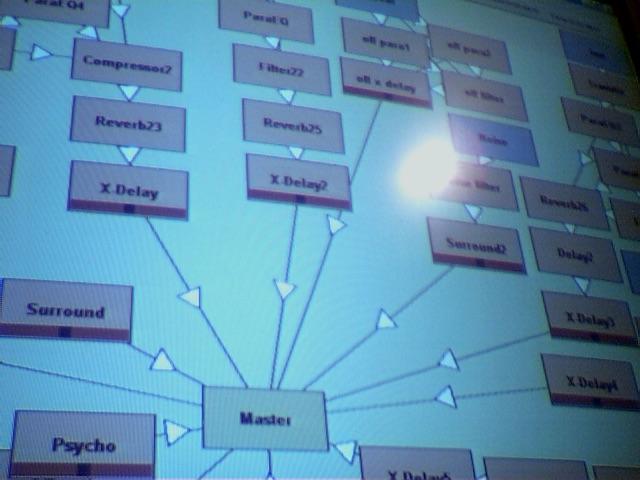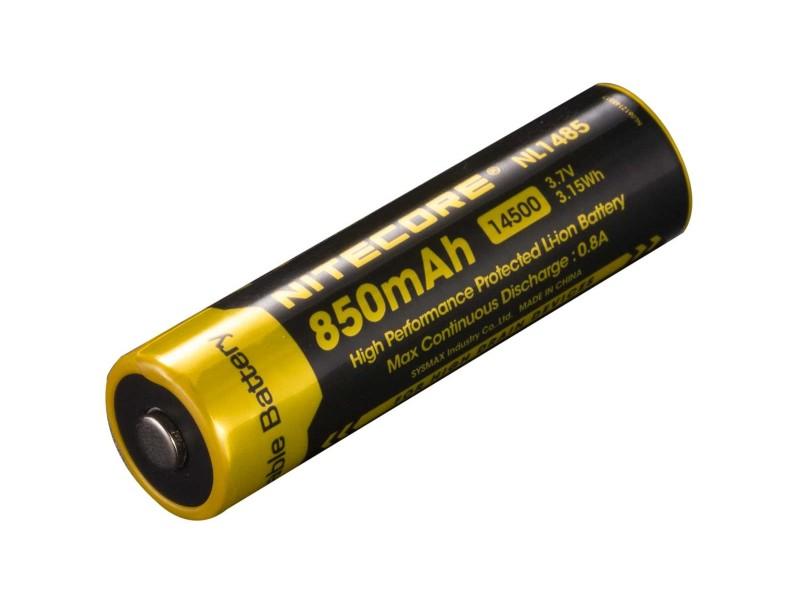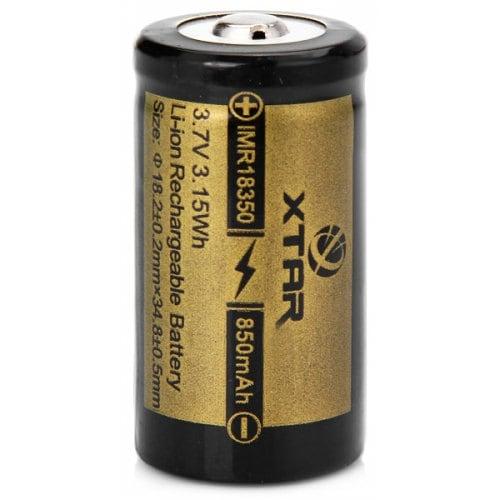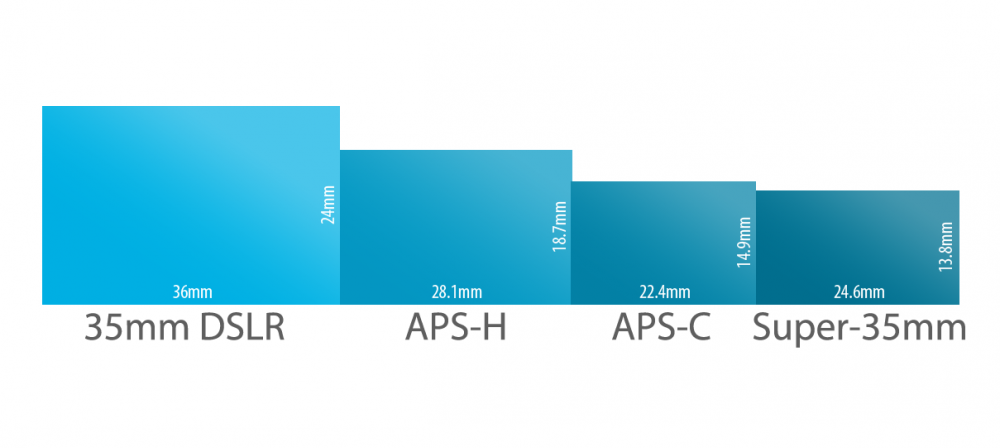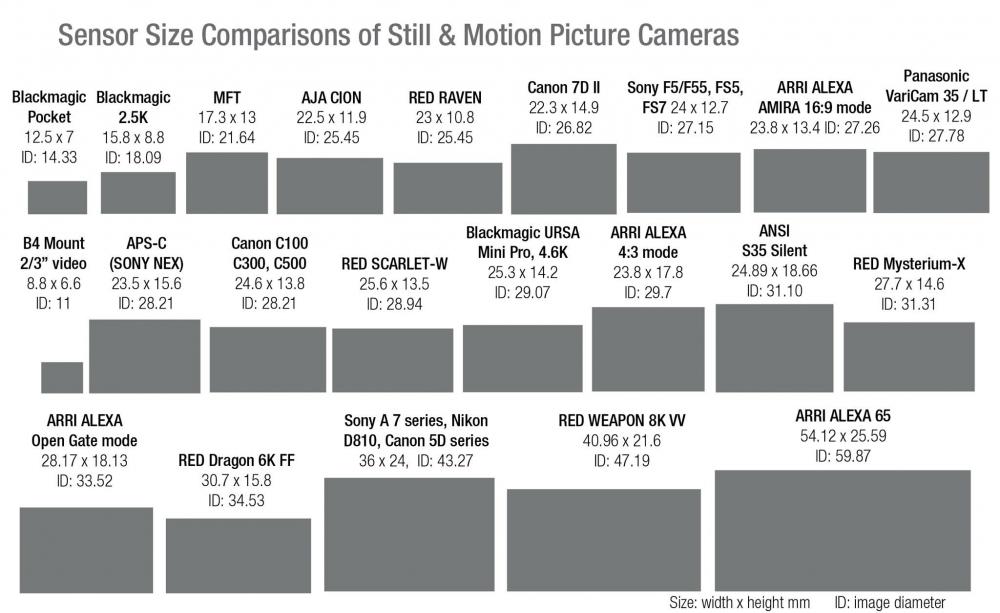Leaderboard
Popular Content
Showing content with the highest reputation on 01/27/2019 in all areas
-
no more mods. we can self regulate @kye regarding your post above, holy S*** i did NOT know any of that stuff about mr brainwash??? ill have to look into it... that being said, historically secure art pieces do not involve "street art", which tends to be remembered for about 3 seconds. could banksy be an exception? sure, maybe anyway, heres my "style" tip: BE RECOGNIZABLE most important soundbite tip ever if youre a • fine artist • photographer • filmmaker • graphic designer • product designer • transportation designer • illustrator • sculptor or ANNNYTHiiiinng else in the arts, your work needs to have a recognizable look, and it needs to be unified. this is how people identify you: your clients, fans, patrons, followers, etc. this is way easier said than done, and does involve some risk taking, but if you dont take some risks, your work is doomed to be an imitation of whats been done already3 points
-

What defines your style as a film-maker?
Mark Romero 2 and 2 others reacted to kye for a topic
Did you ever watch a documentary called Exit Through the Gift Shop? It was a film made by Banksy about the guy who was making a documentary about him. It is a ouroboros mind-fuck and spectacular in every way. The reason that I mention it is that the guy wanted to be as famous as Banksy but without doing any of the work or getting good at art, so he did a bunch of paintings for a huge show and they were terrible, but he talked himself into thinking he was great, and then because he sunk so much money into it people believed he must be great and so his work sold for heaps of money. In the end you're kind of left wondering WTF happened, what is good and what isn't, and how the F can anyone tell anyway. Going for the money doesn't always end badly!3 points -
Thanks mate! Please no!!3 points
-
What makes a video CINEMATIC?
DBounce and one other reacted to thebrothersthre3 for a topic
Yeah like were they just pulling focus off the GH5 lcd? I feel like if a production company signed on to do a TV show they'd at least have a system down that worked for them. I guess failing is part of the learning process. I've seen a ton of incompetence with people who do "video" but its all been non paid passion type projects, so its more understandable there I guess. I consider myself an amateur but some of the stuff I've seen makes me feel professional ?2 points -
For me the eye opener came from watching some old... really old vintage footage. It wasn’t shot great, but still looked like cinema. Motion is the secret sauce. And that makes sense... it is after all “Motion Picture”... so it’s not a big leap to imagine motion would be the key.2 points
-
Interesting. I didn't realise that they were keeping Fusion as a standalone product, although that might not be the long-term direction. I know that in terms of integrating or modifying software significantly, certain bits are a lot easier to get working than other bits. Maybe the roadmap is to gradually add in the bits that Resolve hasn't enabled yet, or maybe not, who knows Yeah. I found it interesting the BM guy searched the forum to see how many times it was mentioned, so maybe they do try and respond to users. I kind of got the impression that they do, but also they have a strong strategy - integrating an NLE, Fairlight, and now Fusion into Resolve wouldn't have been them responding to forum users! It was also interesting the BM guy said that it wasn't necessary, and someone countered by pointing out that 8K support also wasn't necessary.. touché! Agreed. I noticed a huge difference in crashing between 12.5 and 14, so I think someone really pushed for it to get more reliable. It went from crashing about every 20 minutes to maybe every 8 hours of use for me, so that's significant. One thing I can kind of sense is that a lot of the niggling bugs have been around for many versions, so I think they might be harder to get to issues more to do with mashing things together instead of just isolated in one module or whatever. Things like the "I get no audio" bug which seems to be fixed by anything from muting and unmuting in each panel to changing system output device or messing around with the database, and has been with us since v12.5 and probably before that even. I agree it's big and blocky. I alternate between using it on a 13" laptop and using the same laptop with a UHD display. It's better on the larger display, but it's definitely not as customisable as would be ideal. I think this is due to the heritage of it being around for a long time, like most other long-lived software packages look old and inflexible. In a sense this is something that also runs through the film industry too, so much of the processes, techniques, terminology, etc is rooted in out-of-date technologies or previous limitations that are no longer present. This is really a symptom of what happens when you take a challenge (make a film) break it up into the steps (shoot, develop, edit, test-screen, picture lock, sound, colour timing, distribute) and then when the technology changes you update each part individually but not the way that it was broken up in the first place. The things that the film-industry talks about as being revolutionary seem completely ridiculous when viewed from an outside perspective, like the director working with the colourist to create a LUT that was used on-set to preview the look as it's shot, or being able to abandon the idea of the picture-lock by being open to making changes to the edit if the audio mixing discovers any improvements that could be made. These are obvious no-brainer things if you haven't gotten used to those limitations over time. In terms of Fairlight I think that's the case too. Having a mixing desk approach made sense when audio equipment was all analogue, but it's always seemed restrictive to me. Here's a screenshot of the free modular software-only tracker that I was writing music with about 20-years ago. Every blue box was an audio generator and every orange one was an effect. Every arrow had a volume control and every module had an unlimited number of inputs. Every module could be opened up and adjusted with sliders for each parameter. Every slider could be automated. Anyone could develop new modules and share as .DLL files. As computers got more powerful you could have more modules. We got to the point where it became difficult to work with because you couldn't adjust the size of the boxes on the screen and so you'd have stacks of boxes on top of each other. I used to write tracks like the above where there was a separate effects chain for every instrument, except things like compressors where you want them to drive the whole mix. My friend used to connect every module to every other module just to see what they sounded like, and he'd get these amazing textures and tones. He was a big fan of Sonic Youth and apart from writing electronic music with me he also used to play guitar and integrate samples from that, and later on we get into glitch and heavy sampling. I think I would have gone insane if I'd been trying to write music limited to the architecture of a mixing desk, or couldn't just right-click and bring up a new module.. what do you mean every reverb instance costs $1000?????2 points
-

5K RAW 24p video for $150 - Magic Lantern making great strides on Canon EOS M
Alpicat and one other reacted to heart0less for a topic
Another amazing EOS M footage:2 points -
GH5 "5K Open Gate" mode for non-anamorphic shooting?
webrunner5 and one other reacted to Towd for a topic
I really like shooting with the 5k "open gate" format on the GH5. I find it to to be practically indistinguishable to the eye from the 4k 422 mode even when I zoom in and pixel peep a shot. You can then drop it on a 4k timeline as a center extraction which allows some panning and stabilization possibilities. This also allows you to deliver in C4k or UHD if you are just out collecting B-Roll that may be used in a variety of projects. All that said, I find that the vast majority of the time, I'm still delivering 1080p as a final video format. But the 5k full frame feels the most future proof down the line. It'll probably upres to 8k pretty well if we're ever delivering that format in 10 years. GH5 footage is so sharp-- really too sharp! I've matched it with 5k and 6k Red footage in projects, and find I have to always use a small amount of the defocus filter on it in post so it is not so crisp. This is with the GH5's sharpness set to the lowest settings. As far as extreme grading, I typically always shoot V-LOG and run my footage through Neat Video first so the 420 vs 422 has not made much of a difference. I got into this habit while salvaging 5D mark II footage as it really helps the gradability of 8-bit. One thing you will notice is that you lose the Ex Tele Converter zoom functionality in 5k, but you can still punch in in post on the image, so the versatility is still there. Maybe if I was shooting something that I knew was going to be shot entirely with the Ex Tele Converter, I'd just shoot in 4k 422 for the extra chroma sampling, but that's never come up for me. The one place where I do find the 4k 422 better is in green screen extraction. The 422 pulls a finer edge. Where any time I've had to pull a key on 420 footage, I'm left with a 1 pixel outline on my initial matte edge from the chroma sub sampling even after running it through Neat Video. You can erode the mask to fix the edge, but then you loose fine hair detail, etc. I have tested the two modes and both are quite usable compared to some old DSLR 420 8 bit footage, but the 422 is marginally nicer. Obviously an external recorder for green screen footage would be ideal, but in a pinch I've found the 4k 422 recorded internally to give really nice results-- especially for a 2k delivery. And I don't have or use an external recorder with my GH5. Obviously, if you are doing an elaborate green screen shoot, use a pro camera with 444 uncompressed color output, but I sometimes just need to shoot a quick element for a composite and the GH5 in 4k 422 works just fine. For my needs GH5 is just a great little workhorse to get footage to support a larger production or to generate high quality footage for any quick small budget or personal project. I love that I can just throw the camera in a bag without external monitors, gimbals, or other crap and shoot high quality footage from such a tiny form factor. There really is nothing else like it.2 points -

Best APSc camera with 4:3 mode and x2 squeeze
leslie reacted to CfFilmmaker for a topic
Have to add this here because I think there's some confusion on crop factors, lens focal lengths and 4:3 shooting modes. First misconception I see is that "not having a 4:3 shooting mode means you are loosing resolution if you shoot 16:9 because you crop it later". You aren't, in fact. If you do the pixel math you'll find that either way, you are cropping the same amount to reach your desired aspect ratio, the only difference is one is being cropped by the camera to create the 4:3 and the other you are cropping in post. Though the BMPCC 4k doesn't yet have a 4:3 mode, you can still use 4:3 guides to help you see what you need to keep in frame ensuring you don't crop things incorrectly in post. In fact I'd say shooting in 16:9 is awesome because you can reframe things horizontaly if you need to. If you have an external monitor that can do 2x desqueeze (like this one here for $110 http://www.cinemartin.com/monitors/7inch/loyal/lt/) that's even better to use with those guides. Second misconception is that "anamorphic on full frame is worse compared to anamorphic on a crop sensor because you can't use wider lenses thus limiting your field of view". Your field of view on any given anamorphic is set based on the lens you choose. I'll give an example: The Kowa 8z clears full frame 2.4:1 with a 50mm lens. That same Kowa on a m43 sensor can be used with a 25mm lens. If you take into account the sensor's 2x crop factor, it has an equivalent field of view (assuming no speed booster is used). This means that the only difference between anamorphic on full frame and on crop sensors is what taking lenses you have or are willing to buy for the anamorphic. Some of the best 50mm 85mm, and 100mm vintage lenses can be had for less than $60, so this wouldn't be a barrier to me. Since the camera body is the most expensive part of the process, start there and you can get the rest to work with it. One final thing to add is a note on the nature of anamorphic footage and their added field of view. Tito Ferradans mentioned this once on a forum and it blew my mind! Anamorphic lenses squeeze vertical information into a smaller area that then gets decompressed later. This means that if you are shooting on a 2x anamorphic, your horizontal field of view is going to be 2x as much as a normal lens that focal length. To use my earlier example, a 2x Kowa 8z with a 50mm taking lens on a full frame actually has a horizontal field of view equal to a 25mm lens! Kind or crazy. So don't flip out if your anamorphic requires an 85mm lens to clear vignetting, you actually can see a lot more than you think. Hope this helps anyone who's trying to make a decision on what to get! Anamorphic lenses are about feeling more than they are logic. It's not logical to carry around a train of lenses, diopters, filters and single focus modules along with all the other film gear we use. There are so many modern lenses and cameras that you can point, shoot and get great results. Anamorphic is a decision to do something the hard way because of how it feels, both to us, and if we do it right, to our audience.1 point -
Alright. Not about specs really though. If the UMP crops in 1080 RAW but not 1080 Braw, then chances are P4k will do the same. If UMP does still crop in Braw, then the P4k will also still crop. It’s ok if you don’t know. Neither do I.1 point
-
1 point
-
Ever Had Dust In TelePhoto Lens? Canon 70-200 2.8 IS II
webrunner5 reacted to Shirozina for a topic
Depends what the 'dust' is. It can be sticky and bond to the glass and no amount of air will shift it hence why a gel is my go-to tool. Never had a problem with dust between sensor and stack which I assume is a sealed unit. The OP's problem is typical of specs of foreign matter on the sensor cover glass given it's round shape. Dust in a lens - never seen this project it's shape on an image except on a very wide lens where dirt on the front element combined with enough DOF can show but the OP is using a long lens so again it all points to dirt on the sensor cover glass.1 point -
What defines your style as a film-maker?
webrunner5 reacted to mercer for a topic
Although, this is an interesting topic for discussion, I wonder if a lot of folks overthink this stuff? This isn’t binary. It’s intuitive. And individualistic. Every single moment in a person’s life creates a chain reaction in their style or artistic choices. Other than Oliver’s statement earlier in the thread, I think this is the most honest statement...1 point -
Fuji X-T3 and X-T4 discussion
BrunoCH reacted to Attila Bakos for a topic
Looks good, I use this phone holder until I get something better: https://m.aliexpress.com/item/32797019174.html?trace=wwwdetail2mobilesitedetail&spider=y&productId=32797019174&productSubject=Ulanzi-IRON-MAN-II-Aluminum-Metal-Smartphone-Tripod-Mount-with-Cold-Shoe-Mount-Cell-Phone-Tripod1 point -
Do you remember "Girl with balloon"? Now it is "Love is in the bin", and worths even more! https://www.google.com/amp/s/amp.theguardian.com/artanddesign/2018/oct/11/woman-who-bought-shredded-banksy-artwork-will-go-through-with-sale Mr. Brainwash, or whatever is called, is a Banksy creation, the stunt was to make it seem real, so he was pulling some strings for a couple of years before the docu-release, and maybe after. Banksy is THAT good.1 point
-
Neither did I, fun stuff! I just watched a doc called Saving Banksy on Netflix and it was about the guy that tried to save a Banksy from San Francisco and wanted to save it from being painted over by cutting it out of the wall, and what happens after that. It's not as good as Exit but still interesting to watch and leaves you with the same WTF reaction over the system and how things just don't fit together. Recommended1 point
-
Great information in this thread. Thanks to all!1 point
-
With an integral zoom lens there is a fixed defined range so its easier to implement than on an ILC but considering this is a Sony lens on a Sony camera and they know everything else about it you'd think it would be within the bounds of possibility for them to store and resume the value wouldn't you but no. Maybe they think it wouldn't be cinematic or something.1 point
-
I mean I bite webrunners comment, and took it further!1 point
-
Funny you mentioned it, I was just reading that we will have a huge Banksy expo in my city. Sorry for interfering, but this is one of the greatest films of the century! This is really a mockumentary, the character is created by Banksy himself and mocks the whole artistic world and the "gallery" driven artistic market. He was creating the whole project a few years before release, gossips/articles/art/websites e.t.c How shallow is the DOF on this film, by the way?!?1 point
-
Sennheiser XSW-D (Wireless lav set)
zerocool22 reacted to Kisaha for a topic
Yes, but they are really competing with Zaxcom and Lectrosonics, which cost to the thousands, not as much as the G series. Hybrid systems bring the advantages of both worlds, while only analog (G series, older Lectros e.t.c) and only digital (2.XGhz) have some shortcomings. The industry moves to fully digital though. Where are you from? What is the difference? In Europe is just mininal at total numbers (between 5%-10% depending where you shop).1 point -
Sennheiser XSW-D (Wireless lav set)
zerocool22 reacted to Kisaha for a topic
For their intended use and budget these are not problems. They are 8mV only, they are not build for very demanding applications anyway, but for a short distance, they will be fine. Presentations, young musicians, lecturers, prosumer/consumer interviews. There are a lot of competing systems at 2.4GhZ, and the new Aputure/Deity (is not out yet) will be at least twice the price, have in-build battery and work at the 2.4GhZ spectrum. The AVX - which is double the price, work on 2.5GhZ and use 256 decryption (which creates a significant lag in recording also) and take batteries, althought special ones that cost significant money. Pretty cool for most cases and cameramen not wanting to spend much time (and money) for sound. A more appropriate buy for this forum's target group. I saw a picture of one of those open, and they have one of those cylindrical batteries that gimbals have, nothing really special, seems like very easy to replace, and buy. The Sony ones are a much better buy than the G3/G4, they are the ones pushing the G series down in price. If the G series have no issue with the signal, can be effective for a huge distance, but usually have issues with interference. I have stopped using them completely for a few years, now.1 point -
What makes a video CINEMATIC?
webrunner5 reacted to Kisaha for a topic
I thought this wasn't about equipment?!? Shallow DOF is overused thought, that is for sure. If you shoot home videos and you are buying 0.95f lenses, and considering the artistic possibilities of an afternoon shoot at the mall, then I say, take a chill pill, and enjoy your family! I have half a dozen modern cameras home at most times, and a few dozen lenses, and the tools I use most is a dead cheap Samsung NX3000 with the 16-50pz and mobile phones! Sometimes when I go high end, I use the NX500. I want something really small, and "average", do not want to carry my 16-50mm 2-2.8f S, or a few FD lenses. I want all the modern technology can offer to me, AUTO as much as I can, auto everything, while is the completely oppossite when I ak working. M everything, want to have total control, I want to focus what I want, when I want, how I want, but it is JOB. WORK, the rest are for hobby or entertainment reasons, so do not want to sweat and overthink things. A a6400 with the incredible stabilized 18-105mm would be also perfect for most families (even though 16mm at the wide end, are all the money for me), and a M50 with the 15-45mm (this is a X1.6 camera, mind you). I see all the "youngsters" fall for the cinematic look, and produce crap. I helped a new production company last year make a fashion show pilot for a TV station, and they were 5-6 people at their early 20s and a couple guys at their early 30s. Used a couple of GH5 with the 18-35 speedboosted and some legacy 1.2-1.4f - speedboosted, lenses! 80% of the episode was out of focus. 27minutes, and the 20 were out of focus slow motion stuff. I was puking for 5 days straight.1 point -
Panasonic GH5 - all is revealed!
webrunner5 reacted to Shirozina for a topic
The Ronin-S has the integration with the Panasonic cameras to control focus and trigger recording from the gimbal without touching the camera.1 point -
Jabari Parker? I agree with the above. If you gonna do it for the money, you won't get too far.1 point
-
1 point
-
It depends on what you're trying to achieve. Bayhem is a style of art, but so are the styles of films like Russian Ark, or how Nicholas Cage acts. It doesn't mean we have to like them, or emulate them, or that any style is any better or worse than any other. Don't be afraid to admit you like a particular style. Study it, practice it, celebrate it, and own it. and then get paid for it There's a whole debate around selling out vs being a genuine artist that I think people misunderstand. If you compromise your art just to make money then that's unfortunate, but who are we to judge. And if you happen to make art that lots of people like, then there's nothing wrong with that at all.1 point
-
Just as an FYI, I used to shoot Nikon for stills, so my lens collection is primarily old Nikon glass. Even when delivering at 1080p, I've found I need to defocus my GH5 footage to match the softness of footage coming out of Red cameras. Once that that sharpness creeps into the image, it seems to hang on even after the downrez. I think I read a while back that some users like Sage only shoot in 1080p with their GH5 for the more cinematic image. Being the maximalist that I am, I can't seem to let myself do that when 4k and 5k are available formats. But yeah, GH5 footage is REALLY sharp compared to other cameras I've matched it to.1 point
-
Thanks @OliKMIA - I hadn't factored in 5K vs 4K, but as you say, it's splitting hairs, and the whole thing is downscaled anyway. Especially for me considering I don't do green-screen, I deliberately use softer lenses and love the film-look of the output, and I typically just publish 1080p to YT. I'd trade-off resolution for bit-depth and DR any day of the week. I guess the whole point of this thread was to understand if there were any hidden down-sides I didn't know about. Apart from shifting the ETC mode from production to post-production I don't really see any issues for me. Yay!1 point
-

What defines your style as a film-maker?
heart0less reacted to Emanuel for a topic
@kye this forum is not the same since you've landed. Kudos for your posting : ) My vote for a new mod! : -)1 point -
Do you aspire to the "more is more" style of Michael Bay, or the wealth of Michael Bay? Either one is fine - no judgements from me - just curious if the style is the goal, or a means to an end.1 point
-
What makes a video CINEMATIC?
Kisaha reacted to thebrothersthre3 for a topic
Just two examples but in general the entire show is generally shot this way and I don't really see a point to it. IMHO if the audience is concentrating more on the background than the subject it's probably because your story isn't engaging not because you used long DOF. To me having a shallow DOF tends to be more distracting than anything else as it looks unnatural. Just my opinion and stylistic preferance. That said I always buy fast lenses. A 1.4 lens is usually sharper stopped down to 2.8 than a 2.8 lens wide open.1 point -
Here are some of my impressions... Simple compositions, often with a single subject centred in the frame Lots of closeups, often with shallow DoF, both for product shots but also headshots Camera movement combined with speed-changes, often synced to the music Another thing I noticed is that your style is kind of 'loose'. What I mean is that a less relaxed / more up-tight style would only do movement with fixed sliders and tripods, wouldn't be comfortable getting as close to people, wouldn't use different speeds on the same shot, wouldn't use the fancier transitions as editing punctuation, wouldn't use the odd fisheye shot. It's like you've taken a more boring style and turned it up a couple of notches, but haven't abandoned the fundamentals. Nice work!1 point
-
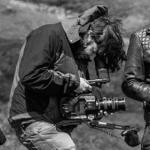
What defines your style as a film-maker?
kaylee reacted to Oliver Daniel for a topic
Thank you. What about it is awesome? Not fishing for compliments, just how people would describe it (I’m collecting some “keywords” for promotion. But to answer the OP... I’m not sure I “like” my own style. It’s just what comes out. When I create, I seek to make an eye-catching distinction. By that, I mean something interesting to look at. Something exciting. That may come out as a combination of things. I learnt by messing around with house hold lights, getting a subject and seeing how interesting I could make it. It could be a teddy bear, my dog, my brother or a garden. I’d keep changing angles, perspectives, movements. Then I’d put it in the edit as mess with the footage. Especially aesthetic. How interesting could I possibly make it? I think this experimentation moulds my work now. Whatever happened in that process so early on has certainly shaped my creative thinking.... I don’t know what that style is though. I just do it and it happens.1 point -

Best APSc camera with 4:3 mode and x2 squeeze
leslie reacted to webrunner5 for a topic
All the Sony FF cameras have the crop mode which ends up a 1.5 crop, just like their APSC cameras are. That way you can use the E mount lenses on the FF stuff which are called FE lenses. And that works out to be pretty close to s35. And Real Cine cameras are All over the place in what they call s35 if you look at the graph below. So digital cameras wise anything goes for s35. The Canon C100, C300, C500 which by the way all use the same sensor, is one of the Few cameras that are really the old film dimensions in the modern era.1 point -
Panasonic GH5 - all is revealed!
webrunner5 reacted to Video Hummus for a topic
A GH5S + a light gimbal (I’ve had my eye on Icecam Vision 3; anyone have experience with it?) is a killer combo that does almost everything well except maybe extreme DOF and if you need that then a speedbooster will fix it. In my opinion you can’t beat the versatility of a good m4/3 camera for video like the GH5(s) series. Almost any lens can be adapted to it. It offers a great balance between DOF and lightness/size of lenses and, when you need it, can be adapted to get the look you want. Every time. panasonic would do well to recognize this and deliver the GH6 as a full fledged video monster. Forget the photo quality. The G9 is better in that regard.1 point -
1 point
-
He said that most productions are shot in 4-5.6f, and that is true, so 2.8f m43 is good for S35 anyway, which is true, and S35 is STILL the industry standard. We shoot some TV shows (which do 16-20% in the ratings, which are very good numbers for our country) with GH5 and 12-100mm and noone have asked for shallower DOF, sometimes I shoot near the defraction numbers to manage to have more things in focus. Also, amateurs usually have the most complaints and needs. A super fast AF camera that sees in the dark and takes pictures and/or videos of little kids running around in dim lighted appartments birthday parties, which is the most difficult situation anyway..1 point
-

Olympus E-M1X - is it worth $3000?
noplz reacted to fuzzynormal for a topic
I have the Voits. They're nice, but wide open expect spherochromatism a bit. A FF with a sharp lens @f1.8 still can't be beat. That's physics. Still, I shoot interviews all the time with M43 'cause that's what I got. When I feel I really need FF on a shoot, I just go and get FF. DSLR rental is cheap.1 point -
not interesting for video really, same variable bitrate codec as EM1.2. I think maybe Panasonic and Olympus fell out and Panasonic didn't share any new codec. Panasonic cameras as so much better IMO, the 10bit ALL-I codec is solid and Panasonic IBIS works better for video (Olympus IBIS warps the edges) I do like Olympus f1.2 lenses though, so I do hope Olympus do well Olympus should make a compact XT-3 like camera, with a new H265 10bit processor and latest AF performance, that would be nice1 point
-

Nikon Z6 features 4K N-LOG, 10bit HDMI output and 120fps 1080p
Mike Black PhotoWorks reacted to DBounce for a topic
Make certain that the digital image stabilization is off.1 point -
Fuji X-T3 and X-T4 discussion
IronFilm reacted to frontfocus for a topic
I use the X-H1 if I only do a few handheld shots. As soon as I bring stabilization I take the X-T3. Or of course both If you don't need the features of the flagships like weather sealing, dual card slots and so on, I would wait 3 weeks for the X-T30 release. It might bring some of the X-T3 features, for a lot less money.1 point -
Fuji X-T3 and X-T4 discussion
Geoff CB reacted to thebrothersthre3 for a topic
I shot this in 2K. Youtube compression is a killer but it gives you somewhat of an example. I haven't tested for moire or anything but from what I've seen the 2k looks great. Rolling shutter is cut in half too.1 point -

Blackmagic Pocket Cinema Camera 4K
zerocool22 reacted to Ehetyz for a topic
So I've seen some derision about Pocket4K regarding it crashing or behaving erratically, as well as issues with the batteries. I thought I'd share my experiences with these. Short version: The battery that comes with the Pocket is utter, utter shit. Use original Canons instead and you'll see way less issues. Long version: That battery really is shit. I really can't overemphasize how shit it is. So, for me Pocket 4K was a no-brainer because I already had a lot of it's necessities lying around - Cfast2-cards, tons of compatible batteries. So, the latter has meant that I've been able to run the Pocket with not just the battery it comes with, but with a couple of relatively fresh (2-year old) OG Canon batteries as well as a few different off-brand ones (4-5 years old). So here's a short summary on how they have performed: Original Canon LP-E6: - No problems, can be charged in-camera or with my canon rechargers. Displays remaining battery accurately. No surprise shutoffs. - Drains the slowest of all the batteries I've tested. Still pretty fast, but quite manageable. Usually end up using 1-2 batteries a shooting day (b-cam). Off-brand LP-E6: - Like Canon, can be charged anywhere. - Depending on the off-brand battery, might or might not display the remaining charge accurately. - Can go from 40% to empty in seconds. So the 0-40% range is a bit of a wild card. May be due to inaccurate charge display or these might just be plain old and tired. - Drains faster than the Canon. The Blackmagic... thing: - Can't be charged with Canon chargers, causes them to enter fault mode (continuous blinking.) Occurs with both my chargers. Googling the issue has led me to find others with same experiences. Can only be charged through the camera. - Charge display is just whatever. Can go from over half-full to camera shutdown in seconds. - Sometimes works like an off-brand one. At worst, from full charge, lasted me around 3 minutes of recording before the first shutdown. - And notice the above? "First shutdown"? That was today. So, apparently the blackmagic battery is prone to just dying momentarily when there's a large power drain present. So what happened was, I set the camera to record, with battery at around 75-80%, and after a few seconds the battery meter goes haywire and the camera shuts down. Then it boots up again, and the battery shows up at 75%. Guess what happens when I hit record? Rinse and repeat. That was the moment I chucked the battery. Switched to Canon originals and the rest of the day went without a hitch. So, taking from this, I think some of the reported erratic behavior can be traced to the completely all over the place quality of the original battery. Having the camera reboot itself during recording is something that could be blamed on the camera if you have no way to troubleshoot and find the real culprit - which was the blackmagic battery. Maybe there are good ones too, but to stay on the safe side, I'd recommend just using it as a last resort backup at most, and sticking to Canon originals or maybe some higher-quality off-brand ones.1 point -

5K RAW 24p video for $150 - Magic Lantern making great strides on Canon EOS M
Alpicat reacted to Brian Williams for a topic
I’m using the 7artisans 35 1.2 for Eos-m, super small setup and pretty awesome lens for the price. Though I think I’m going to get the Viltrox adaptor and Tamron 45mm for the stabilization. I can say that the rolling shutter is a lot better in the 3x3 mode... in 3x3 mode (1736x1158) the rs shows a percentage of 57% (however that translates), whereas 1x3 mode (1504x1920) shows 84%. It seems to get better the lower the resolution, which makes sense of course.1 point -
Fuji X-T3 and X-T4 discussion
IronFilm reacted to Simon Young for a topic
@Geoff_L Sounds like the Z6 will be a perfect match for you. I forgot to write this but when it comes to stills quality between the two, there’s no contest.1 point -
Yes you can use Luts in Photoshop. When you open a raw in Photoshop you will get the ACR window. At the bottom it will say "Adobe RGB (1998), 8bit, etc..." click on this. Now select 16bit, and also click "Open in Photoshop as Smart Objects". This simple step will give you the best quality and let you do RAW adjustments after opening the file in PS (just double click on the thumbnail on the layer window). Now you can make an Adjustment layer called "Color Lookup" which will let you select a lut. (you can do this without the first step)1 point


